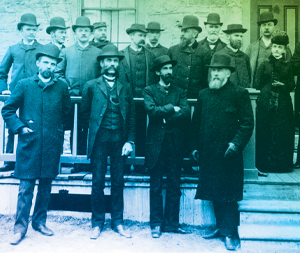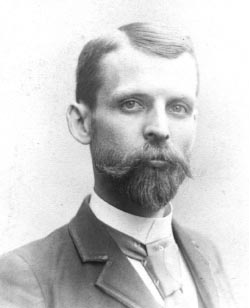

THE FIRST DEAN
Louis E. Reber was leaving academia behind and moving to Texas.
By 1883, the instructor in mathematics and military tactics had grown frustrated with low pay and what felt like a stagnating career. Reber hoped a switch to private business in the Lone Star state would be more rewarding.
Penn State President George W. Atherton proposed a different path. Instead of heading south to Texas, Atherton suggested that Reber go north to spend the next year at the Massachusetts Institute of Technology (MIT), where he could complete graduate work in mechanical engineering and observe best practices in engineering education. Then, Reber could bring his knowledge back to Penn State and apply it to the task of restructuring the existing two-year program in mechanic arts and developing a four-year baccalaureate program in mechanical engineering.
Reber agreed to Atherton’s proposal. Following his return from MIT, he worked tirelessly for more than 20 years—the last 12 as the school’s first dean—to push engineering forward while balancing growing student demand for engineering courses with shoestring budgets, an undersized faculty, and perpetually limited facilities and equipment.
Reber was the first in a line of engineering deans that stretches across the history of the college: 12 individuals from a variety of backgrounds who have brought with them unique personalities, perspectives, and priorities to the college’s chief leadership position.
In their words
“The more closely I become acquainted with the equipment and work of some other large engineering schools, the better I am satisfied with the equipment provided and work being done at our own institution.”
Louis E. Reber in his 1895 annual report




